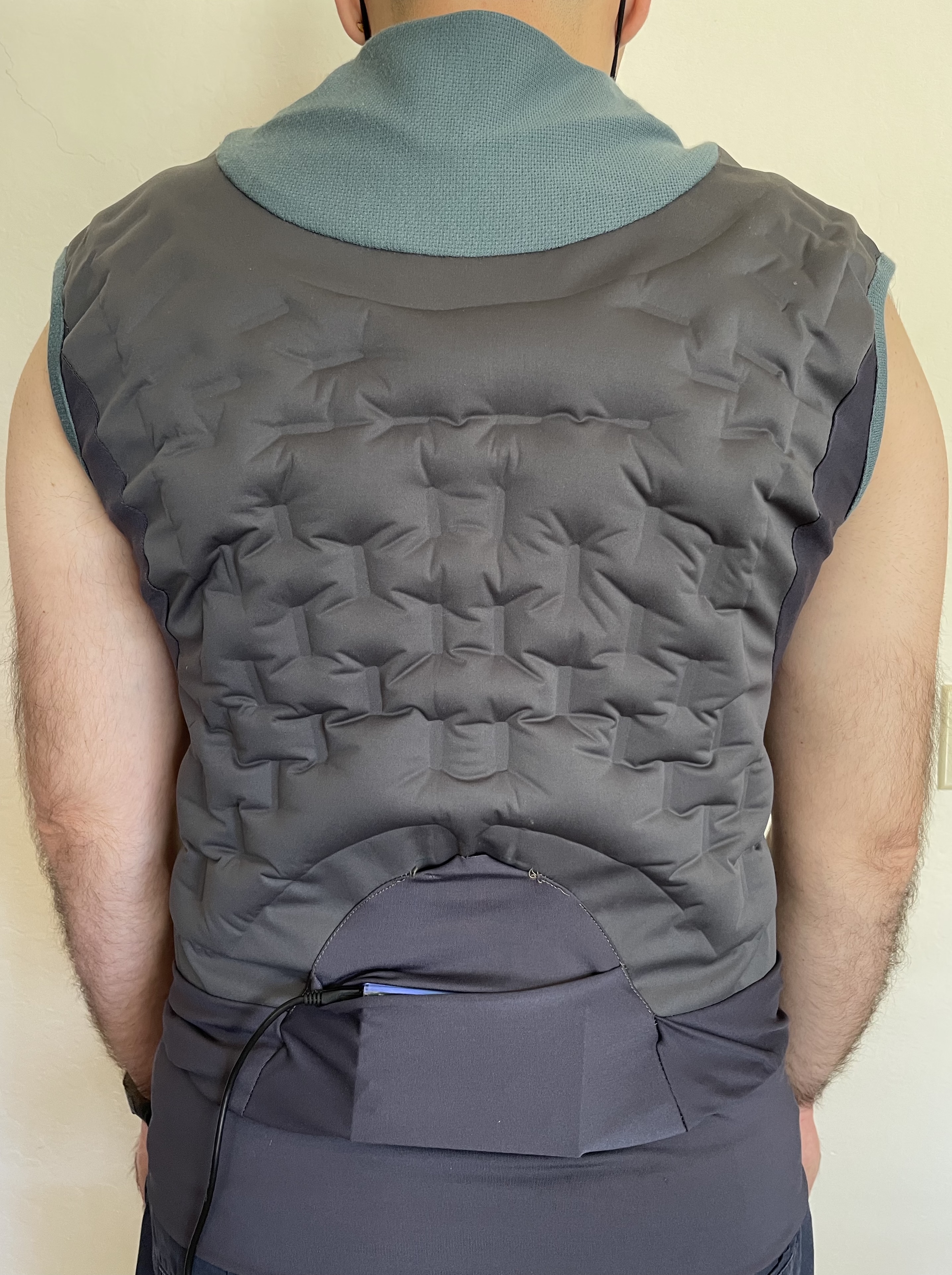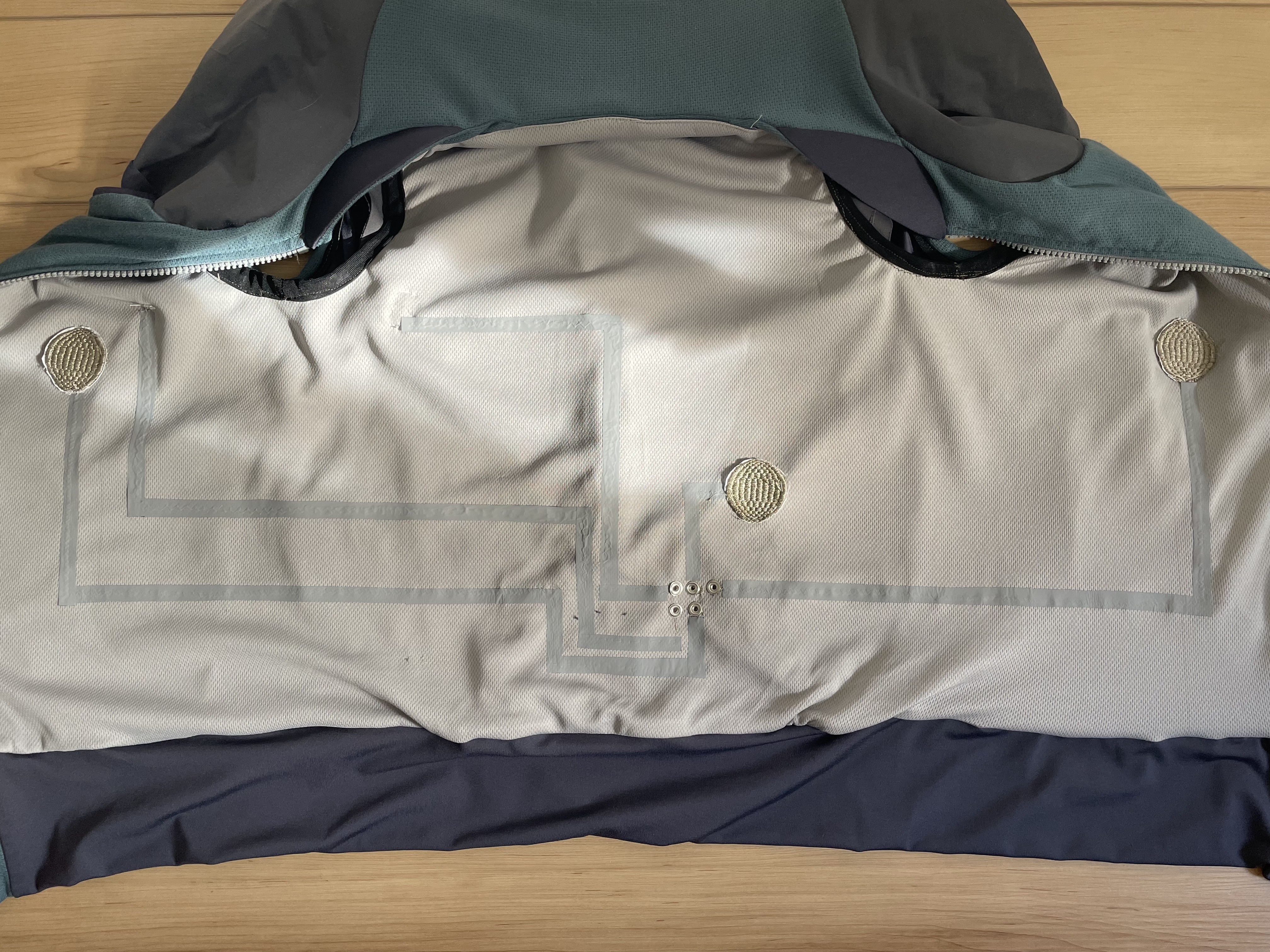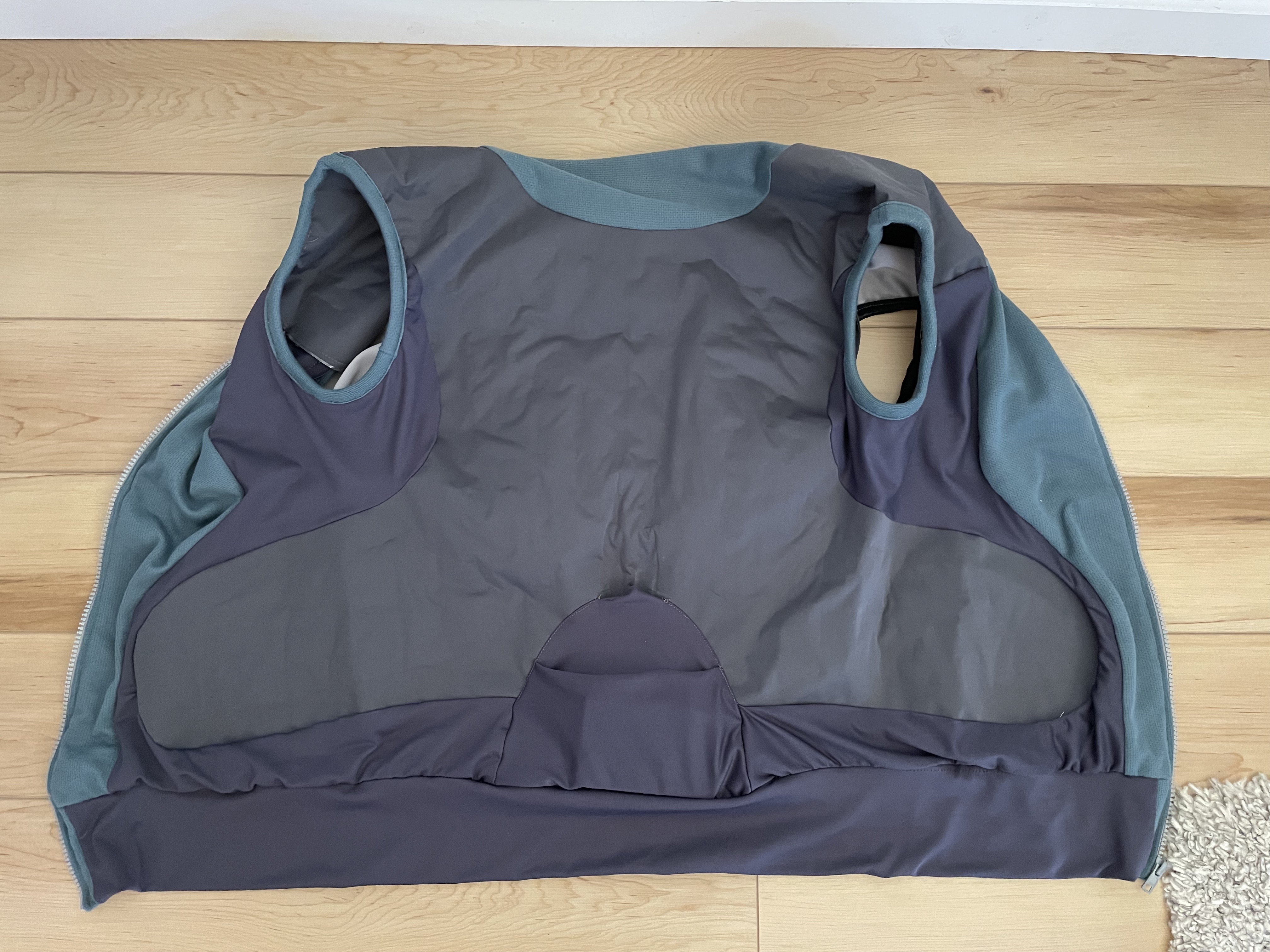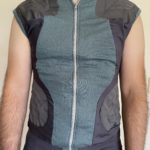Company:
University of California, Davis
Project Details
Fabric 1
Matte Finish Nylon Spandex Jersey
Producer:
Primary Use:
Main Fabric
Fabric 2
Active Dry Wicking Jersey Mesh
Producer:
Primary Use:
Secondary Fabric
Fabric 3
TPU laminated Polyester Interlock
Producer:
Primary Use:
Additional Fabric
Engineer Name 1
Gozde Goncu-Berk & Ruoyu Zhang
Engineer Company 1
UC Davis
Design Name
Gozde Goncu-Berk
Design Company
UC Davis
Fabrication Name
Rova Cigdem Yilmaz
Fabrication Company
UC Davis
Please describe the project specifications
CalmWear is a novel reactive smart clothing that uses the versatility of textiles to embed pneumatic actuating and vital sensing systems that can deliver tactile stimulation through dynamic compression in response to change in heart rate variability (HRV) and respiration rate (RR) as indicators of the emotional arousal of a person with anxiety disorder. Our design displays a fully automated, context-aware and dynamic tactile sensory stimulation that is triggered by real time monitoring of HRV and RR as indicators of anxiety through e-textile sensors rather than on-command stimulation. (See CalmWear in action--it is connected to a computer to visually display the vital sign data in the video for description purposes, CalmWear does not need to be connected to any external device to function: https://youtu.be/tn-WYcr3wqs)
The design process of CalmWear was guided by a framework of design requirements developed through in-depth exploration and analysis of positive and negative aspects of existing wearable tactile products that aid anxiety disorders through tactile stimulation such as compression clothing, weighted vests and blankets. We addressed the location and amount of compression, product comfort, use experience and visual style throughout the iterative design and development process. We targeted adult male and females with anxiety disorders as the end users of CalmWear since majority of manual compression vests available in the market are geared towards kids. We also created a visually appealing athletic style to eliminate the look of a medical and technological intervention and designed a vest that can blend in with casual wardrobes. Patterns of CalmWear were drafted with product comfort in mind and were strategically zoned to allow for thermal comfort and breathability with mesh knit fabric, ease of movement with four-way extra stretch fabric. The visual style with color blocking displays an athletic aesthetic and blends in with daily styles rather than appearing to be a medical intervention wearable that draws attention.
CalmWear provides a unique use experience with reactive compression and tactile actuation via an inflatable bladder at the back of the vest. CalmWear provides compression and tactile actuation via a single inflatable bladder that covers back and sides of the torso and the shoulders avoiding the chest and stomach for a pleasant sensation. The pattern of the inflatable bladder was designed by avoiding any seams, bunching and folding in the inflated state, keeping in-mind the size change in flat versus inflated states. The strategically textured air bladder structure was designed so that the inflatable bladder allows for wide range of motion, is not restrictive but compressive at the inflated state.
We used HRV and RR monitoring to detect anxiety and trigger the inflation of CalmWear. Calmwear automatically responds to changes in these vital signs through dynamic inflation and deflation to regulate the amount of compression based on HRV and RR data. The air is pumped into the inflatable bladder from a single point at the lumbar region which leads to a gradual increase in the compression sensation and a gentle fluttering sensation as air flows through the textured structure. A microcontroller controls the mini air pump to inflate the air bladder and maintain the inner pressure of the air bladder by proportional–integral–derivative (PID) control with pressure sensor. 2-lead ECG was employed to measure heart rate (HR) and calculate the HRV. 40mm diameter ECG electrodes were digitally designed using embroidery software and embroidered on the inner lining of CalmWear using a CAD embroidery machine. Silver coated polyamide Maderia HC 12 conductive thread was used to embroider the ECG electrodes. Two ECG electrodes were located on the chest region and the third ground ECG electrode was located on the back-left side. As for RR acquisition, a conductive rubber cord stretch sensor was assembled below the right arm hole region of the inner lining. ECG electrodes and the two ends of the cord stretch sensor were connected to the electronic hardware via conductive tracks realized with zig zag stitches, and metal snaps located on the lower back of CalmWear.
What is unique or complex about the project?
The emotional and physical health benefits that come by being touched in safe ways are well established. Tactile sensory stimulation has been reported to help calm the arousal in people with Autism Spectrum Disorder (ASD), Attention Deficit Hyperactivity Disorder (ADHD), Sensory Processing Disorder as well as Anxiety Disorders. Anxiety disorders which effect around 265 million people worldwide can benefit from innovation into design-based, non-pharmacological interventions. Smart clothing and textiles have the potential to not only to sense and collect physiological data about the wearer but also to act on the body with embedded actuation capabilities such as promoting tactile stimuli. This project presents a novel reactive smart clothing that can respond to changes in vital signs of the body with tactile stimulation. CalmWear features tactile actuating through a strategically located and textured air bladder that provides automated and dynamic compression in response to change in heart rate variability and respiration rate as indicators of anxiety. CalmWear offers novel ways of complementing care to empower people with anxiety disorders with its ubiquitous nature and its affordance. What sets this project apart is that Calmwear is fully automated and context-aware and can provide dynamic tactile sensory stimulation that is triggered by real time monitoring of HRV and RR as indicators of anxiety through e-textile sensors rather than on-command stimulation.
Content is submitted by the participant. IFAI is not responsible for the content descriptions of the IAA award winners.




 TEXTILES.ORG
TEXTILES.ORG






